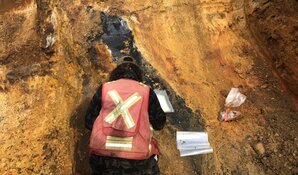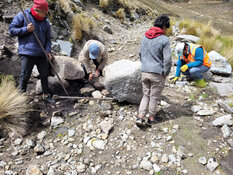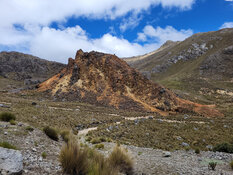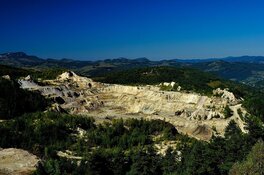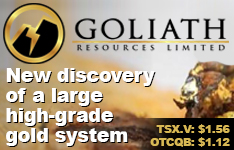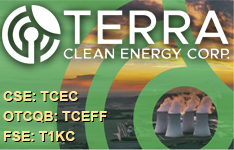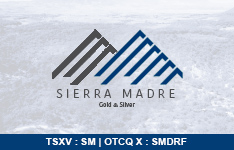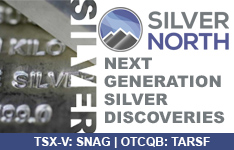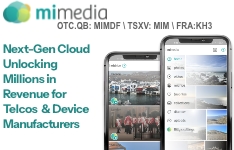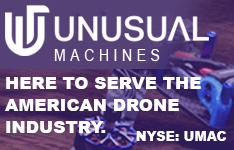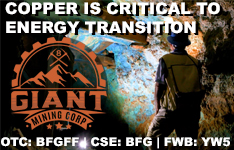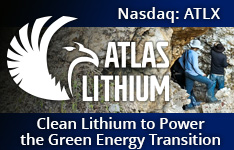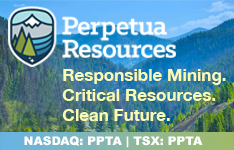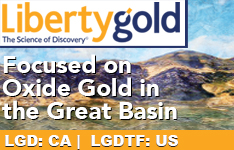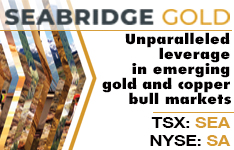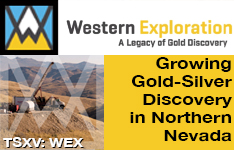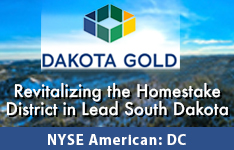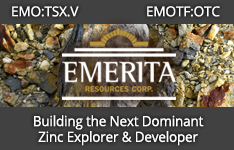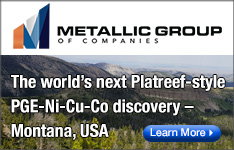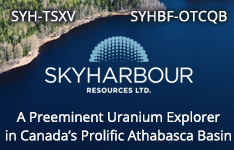NexGold Mining Corp. (NEXG.V:TSXV; NXGCF:OTCQX; TRC1.F:FRA) has announced additional results from its ongoing 25,000-meter infill diamond drilling program at the Goldboro Gold Project in Nova Scotia. The program, initiated on January 22, 2025, is designed to increase confidence in the geological and grade continuity of existing mineral resources by upgrading areas within the open pit classification. According to the company, the drill campaign is approaching completion, with final assays expected through mid-Q3.
This latest release covers 18 drill holes totaling 2,775.3 meters from the project's proposed west pit. Notably, NexGold intersected 25.79 grams per tonne (g/t) gold over 4.5 meters in hole BR-25-522, including 227.0 g/t gold over 0.5 meters. Another strong interval was recorded in hole BR-25-489, which returned 18.10 g/t gold over 3.0 meters, including 52.57 g/t gold over 1.0 meter.
In the company news release, President and CEO Kevin Bullock stated, "The results to date at the west pit are demonstrating that the general geological model is as predicted, with adjustments to the mineralized solids required for local variation in position to accommodate the recently acquired data. We are also encouraged by additional intersections of gold mineralization which were not previously intersected."
The company reports that approximately 24% of the program's drill holes have been released so far. In addition to confirming predicted mineralization, the program has identified new mineralized zones not previously included in the resource model. These findings will be incorporated into an updated Mineral Resource Estimate and a planned Feasibility Study update expected later in 2025.
NexGold follows industry-standard quality assurance and quality control (QA/QC) protocols. Core samples are analyzed by fire assay, and those exceeding 0.5 g/t gold are subject to re-analysis by the total pulp metallics method. The data undergoes cross-checks between independent labs to ensure accuracy.
Gold's Role in a Fractured Financial Landscape
Gold remained central to both investor strategy and systemic financial debate in mid-June, with multiple sources highlighting its multifaceted function as a hedge, a profit driver, and a systemic signal. On June 13, Stockhead reported that gold briefly touched US$3410 per ounce following reports of Israeli airstrikes on Iranian nuclear facilities. The publication noted that "investors piled into safe havens," with gold seeing an immediate price spike amid broader market unease and a steep drop in the Australian dollar. This surge mirrored similar defensive investor responses during previous geopolitical shocks.
On the same day, VBL detailed how U.S. bullion banks had capitalized on Q1 2025 volatility. According to the report, precious metals desks at major U.S. institutions generated US$500 million in revenue, making it the second-highest quarterly total in a decade. This performance stemmed from arbitrage opportunities as COMEX gold and silver traded at a premium to global benchmarks. "Traders responded by buying metal abroad and shipping it to the U.S. to take advantage of the price differential," the report explained.
Independent analyst Chen Lin also commented on the day's market movements, stating, "Oil jumped, gold jumped... I sold out my future positions in gold and silver, taking nice profits." He cautioned against overreliance on gains triggered by geopolitical uncertainty, noting, "I don't like the geopolitical induced price jump and you don't know who has margin calls coming."
In a broader reflection published June 16, Matthew Piepenburg of Matterhorn Asset Management described gold as a diagnostic tool within the financial system, writing, "Gold is calling BS on an entire global financial system." He argued that rising physical gold demand — particularly over 2,000 tons moved from London to New York in 2025 — revealed systemic leverage and distrust in paper derivatives. Piepenburg stated that gold has "emerged as the global Tier-1 asset" as confidence in fiat currencies eroded under the weight of debt and central bank policies. He also referenced a report by European Central Bank economists warning that physical gold shortages in the Eurozone could trigger systemic risk due to overleveraged contracts with a gross exposure exceeding US$1 trillion.
Drill to Build: How Goldboro Anchors NexGold's Growth Strategy
NexGold's drilling results come at a critical time as the company advances Goldboro toward full development. Based on a 2022 Feasibility Study (FS), the Goldboro project is positioned as a robust open-pit operation with an estimated 11-year mine life and average annual production of 100,000 ounces of gold. The FS calculated a CA$328 million after-tax net present value (NPV) at a 5% discount rate, using a gold price of US$1,600 per ounce, with an after-tax internal rate of return (IRR) of 25.5%. Initial capital costs were estimated at CA$271 million, which contemplated a contractor-operated mining fleet.
According to the company's May 2025 corporate presentation, the phased approach to mine development includes potential underground expansion starting in year six, leveraging open-pit operations to support upfront capital recovery. Goldboro's infrastructure is designed to be contained within a single watershed to minimize environmental impact and simplify permitting.
NexGold continues to pursue multiple permits in parallel. It has secured a mineral lease and a Crown land lease, while further progress is anticipated on its Industrial Approval and federal Schedule 2 Amendment under the Metal and Diamond Mining Effluent Regulations (MDMER). A Fisheries Act Authorization, required for aquatic habitat impacts, is expected to follow completion of the Schedule 2 process.
Exploration efforts also indicate long-term upside. Beyond the current resource footprint, NexGold has identified a 1.7-kilometer extension of mineralization west of the known deposit, toward the historic Dolliver Mountain gold mine. This near-surface potential, supported by recent induced polarization (IP) surveys, complements the company's strategic objective to grow Goldboro's resource base.
Analysts See Strong Upside for NexGold as Goldboro Advances
On May 20, Ron Stewart of Red Cloud Securities provided a positive assessment of NexGold Mining Corp.'s ongoing drilling program at the Goldboro gold project in Nova Scotia. In his research note, Stewart wrote that the latest batch of infill drill results "should bolster the size of the Goldboro resource in a future Mineral Resource Estimate update." He characterized the results as "slightly positive," adding that they "confirmed gold mineralization over broader zones and previously unrecognized areas."
Stewart reiterated a Buy rating for NexGold and maintained a target price of CA$4 per share, representing a 448% potential return from the CA$0.73 share price at the time of publication. He highlighted that the current drill campaign, which had completed approximately 17,000 meters of the planned 25,000 meters, included standout intercepts such as 1.03 grams per tonne (g/t) gold over 18.9 meters and 1.86 g/t gold over 10.9 meters.
In terms of project scale, Stewart noted that the overall Goldboro resource included 21.6 million tonnes at 3.72 g/t gold in the Measured and Indicated category, and 3.2 million tonnes at 4.73 g/t gold in the Inferred category. He pointed to the 51 kilometers of strike potential identified through geophysical surveys across the Goldboro and Lower Seal Harbour trends as supporting further exploration upside.
 Streetwise Ownership Overview*
Streetwise Ownership Overview*
NexGold Mining Corp. (NEXG.V:TSXV; NXGCF:OTCQX; TRC1.F:FRA)
Discussing project economics, Stewart cited the Feasibility Study, which outlined a base case after-tax net present value (NPV) of CA$328 million and an internal rate of return (IRR) of 25.5% at a gold price of US$1,600 per ounce. At a higher price of US$1,920 per ounce, the after-tax NPV rose to CA$556 million with an IRR of 37.5%. "At current spot prices," Stewart wrote, "we would expect further increases in both figures."
He concluded that the Goldboro model forecasted average annual production of about 100,000 ounces of gold over a 10-year mine life, with an average all-in sustaining cost of approximately CA$1,000 per ounce. Stewart added, "We look forward to seeing NexGold becoming a multiasset producer," referencing the company's dual-track development strategy involving both the Goldboro and Goliath projects.
Ownership and Share Structure
The company notes that management and insiders own 2.7% of NexGold.
Institutions own 26.5%.
Strategic investors own 31.1%. Frank Guistra owns 7.0%, Sprott owns 6.3%. Extract owns 7.8%. First Mining owns 1.8%. Matrix owns 0.9%, and Teck owns 0.9%.
NexGold had 157.6 million shares and a market cap of CA$129.2 million, following the closing of its recent CA$10 million bought deal private placement financing.
Want to be the first to know about interesting Gold investment ideas? Sign up to receive the FREE Streetwise Reports' newsletter.
Subscribe
Important Disclosures:
- NexGold Mining Corp. is a billboard sponsor of Streetwise Reports and pays SWR a monthly sponsorship fee between US$4,000 and US$5,000.
- As of the date of this article, officers and/or employees of Streetwise Reports LLC (including members of their household) own securities of NexGold Mining Corp.
- James Guttman wrote this article for Streetwise Reports LLC and provides services to Streetwise Reports as an employee.
- This article does not constitute investment advice and is not a solicitation for any investment. Streetwise Reports does not render general or specific investment advice and the information on Streetwise Reports should not be considered a recommendation to buy or sell any security. Each reader is encouraged to consult with his or her personal financial adviser and perform their own comprehensive investment research. By opening this page, each reader accepts and agrees to Streetwise Reports' terms of use and full legal disclaimer. Streetwise Reports does not endorse or recommend the business, products, services or securities of any company.
For additional disclosures, please click here.


